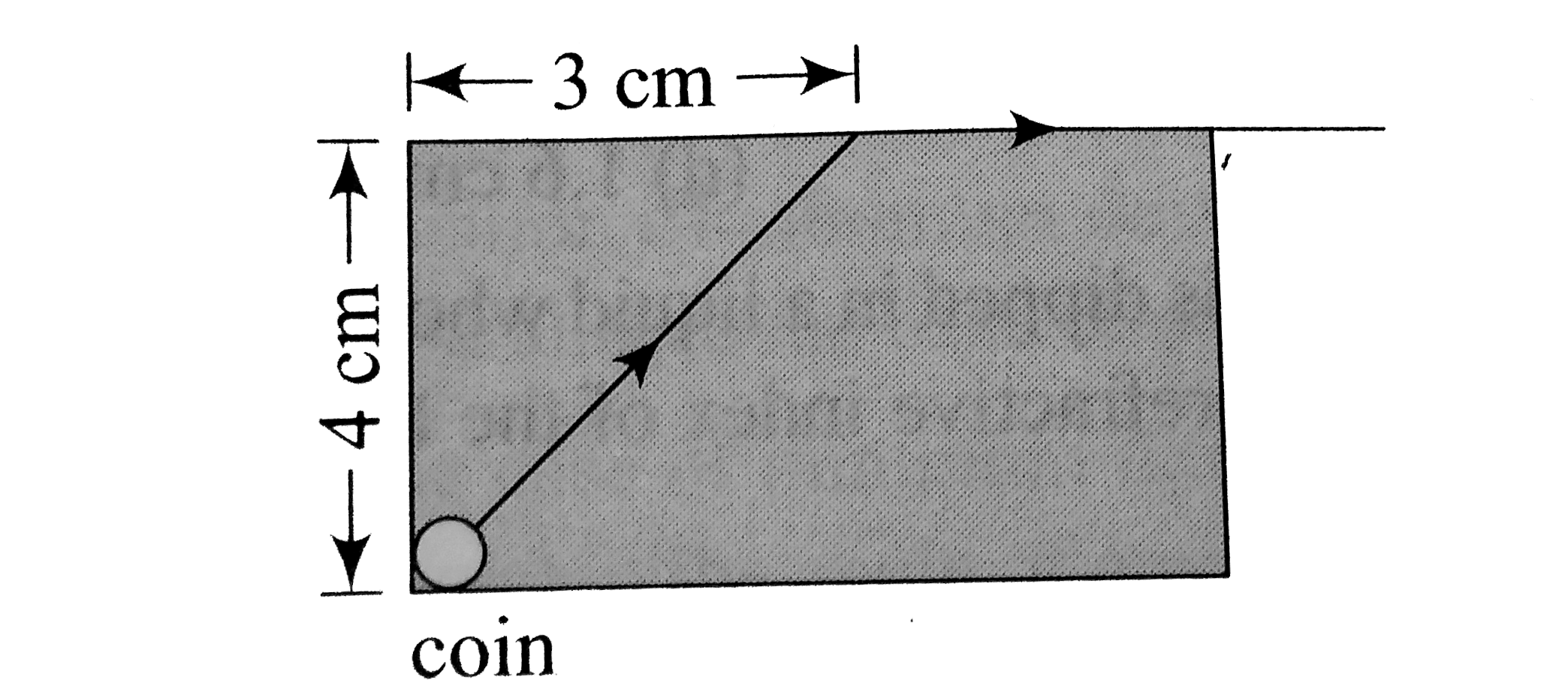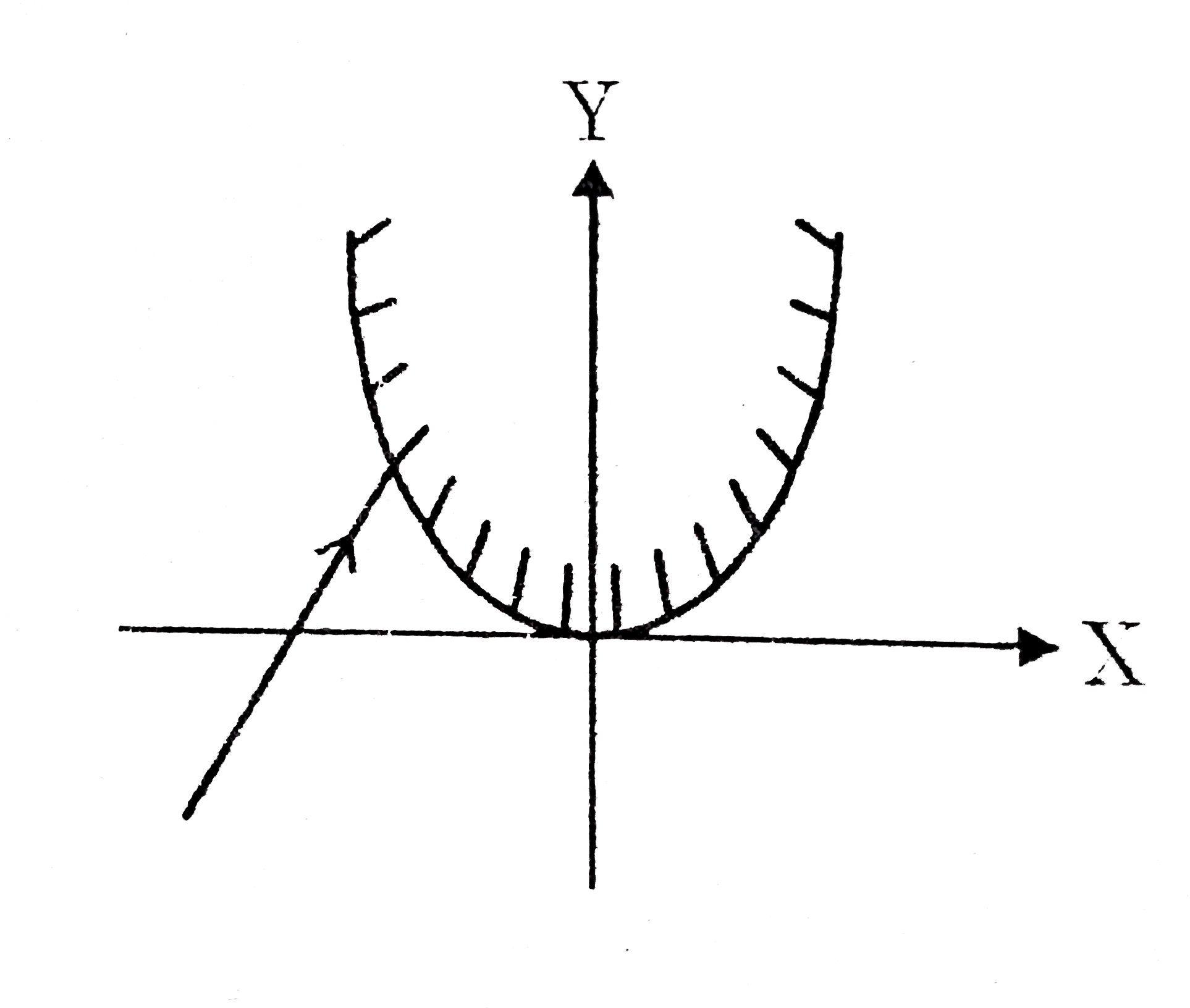A ray travelling parallel to the optical boundary along its surface
will undergo no refraction
will partially refract and partially travel undeviated
will suffer total internal reflection
none of the above
The correct Answer is:B
Step-by-Step Solution:
1. Understanding the Scenario: We have a ray of light traveling parallel to the optical boundary between two different media. Let's denote the refractive index of the medium on the left side of the boundary as n1 and the refractive index on the right side as n2.
2. Analyzing the Ray's Path: Since the ray is traveling parallel to the optical boundary, it means that it is not entering the second medium at an angle but rather is aligned with the boundary itself.
3. Refraction Principles: According to the principles of refraction, when light travels from one medium to another, it can either refract (change direction) or reflect (bounce back). The behavior of the light ray depends on the angle of incidence and the refractive indices of the two media.
4. Applying Snell's Law: Snell's Law states that n1sin(θ1)=n2sin(θ2). In this case, since the ray is parallel to the boundary, the angle of incidence θ1 is 0 degrees. Therefore, sin(0)=0, which means that the angle of refraction θ2 will also be 0 degrees.
5. Conclusion on Refraction: Since the ray does not change direction (it continues to travel parallel to the boundary), we conclude that the ray will not undergo any refraction.
6. Selecting the Correct Option: Based on the analysis, the correct answer to the question is that the ray will undergo no refraction.
Final Answer: The ray traveling parallel to the optical boundary will undergo no refraction.
---
Topper's Solved these Questions
- REFRACTION OF LIGHTBOOK - ICSECHAPTER - REFRACTION OF LIGHTEXERCISE - APPLICATION BASED MCQ:
17 Videos
- REFRACTION OF LIGHTBOOK - ICSECHAPTER - REFRACTION OF LIGHTEXERCISE - NUMERICAL BASED MCQ:
6 Videos
- RADIOACTIVITYBOOK - ICSECHAPTER - RADIOACTIVITYEXERCISE - NUMERICALS
2 Videos
- REFRACTION OF LIGHT AT PLANE SURFACESBOOK - ICSECHAPTER - REFRACTION OF LIGHT AT PLANE SURFACESEXERCISE - EXERCISE-4(D) MULTIPLE CHOICE TYPE
3 Videos
Similar Questions
A ray of light travelling parallel to the principal axis, passes through the ......... (principal focus/centre of curvature) after reflection, in case of a concave mirror.
View SolutionA small coin is resting on the bottom of a beaker filled with a liquid. A ray of light from the coin travels up to the surface of the liquid and moves along its surface (see figure ).
How fast is the light travelling in the liquid ?

View Solution
Knowledge Check
In case of a travelling wave, the reflection at a rigid boundary will take place with a phase change of
Aπ2 radianBπ4 radianCπ6 radianDπ radian
A ray of light, travelling parallel to diameter of a sphere enters the sphere through a hole at point A as shown in the figure. The inner surface of the sphere is made perfectly reflecting. Find the number of reflections suffered by the ray before coming out of the sphere.

View SolutionA ray of light travelling in water is incident on its surface open to air. The angle of incidence is θ, which is less than the critical angle. Then there will be
View SolutionThe circular boundary of the concave mirror subtends a cone of half angle θ at its centre of curvature. The minimum value of θ for which any ray incident on this mirror parallel to the principal axis suffers reflection more than once is
 .
.
View SolutionA parabolic mirror is silvered at inner surface. The equation of the curve formed by its intersection with X-Y plane is given by y=x24. A ray travelling in X-Y plane along line y=x+3 hits the mirror in second quandrant and gets reflected. The unit vector in the direction of reflected ray will be

View SolutionA rectangular wooden box 10cm×20cm×40cm is size is kept on a horizontal surface with its of lergest are on the surface .A minimum force of 10N applied are on the surface sets the box in sliding motion along the surface If the surface, minimum force applied parallel to the surface , to set the box in motion , is
View SolutionA ray of light, after refracting through a concave lens, emerges parallel to the principal axis. Draw a ray diagram to show the incident ray and its corresponding emergent ray.
View SolutionFour indicident rays of light parallel to optic axis and their path after passing through an optical system are shown in table-1. match the corresponding optical instrument from table 2.

View Solution
